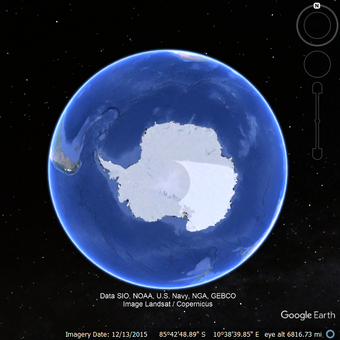Antarctic Region
Antarctica is the southernmost continent in the world, surrounded by the Southern Ocean. Antarctic terrestrial and marine communities are sensitive to climate and environmental change. The 1959 Antarctic Treaty, to which the United States is a co-signatory, dedicates the Antarctic to peace and science, and restricts military and industrial activity.

The Antarctic Region comprises the area south of 60 degrees South Latitude, including all ice shelves. While this unique and fragile environment is exposed to direct and indirect pressures from human activities, it plays a vital role in the global climate system, supports unique organisms and ecosystems, and provides an unparalleled platform for multi-scale environmental and cosmological research. The United States is committed to continuing to lead cooperative international efforts to maintain the region as a relatively pristine area devoted to peaceful purposes and the conduct of scientific research, long into the future.
United States policy in the Antarctic Region has four fundamental objectives: (1) protect the relatively unspoiled environment and its associated ecosystems (2) preserve and pursue unique opportunities for scientific research to understand the Antarctic Region and global physical and environmental systems, (3) maintain the Antarctic Region as an area of international cooperation reserved exclusively for peaceful purposes, and (4) assure the protection and conservation of the living resources in the Antarctic Region.

As a member of the U.S. Global Change Research Program and its participating agencies, and in coordination with the U.S. Antarctic Program, USGS collaboratively supports scientific research to advance the data and information available to the global community for climate risk analysis, resilience, and adaptation. Working closely with the Department of State, the National Science Foundation, and the National Oceanic and Atmospheric Administration, USGS helps maintain scientific programs that support informed decision-making – rooted in the best available science – for sustainable management and effective conservation of Antarctic marine living resources.


